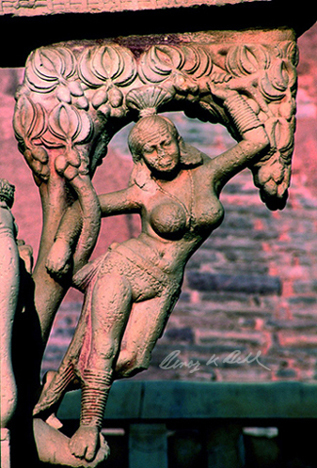Maya, the first deity

Shalabhanjika, Sanchi Stupa II, 1st century CE. The yakshi convincingly conveys the fertility and abundance of nature.
Benoy K Behl
In Indic thought, the final truth which is sought is formless, arupa or nirguna. According to the Chitrasutra, for seeing the eternal, eyes are to be closed in meditation. Thus, in the heart of the sacred space, is made a symbol of that which is beyond the forms of the world around us, the stupa or the linga.
On the stupa railings and on the temple walls are made all the shapes and creatures of the world, which we recognise and must leave behind, as we proceed to the space of meditation, which is within.
The gateway to the shrine or stupa is given a special importance. It is here that we cross the threshold to enter the sacred space. We must now leave behind the concerns and temptations of the world.
At the gateway, we are met by the yakshi or yaksha, personifications of the fruitful abundance and wealth of nature. The name comes from the root of the word ‘yagnya’, which means ritual offering. These, the earliest deities of Indian art, mark our respect and acknowledgement of the natural order. For indeed, we may wish to free ourselves from the forms of the world, but who can deny our attachments and the power that they exercise?
Thus, even as we proceed to the sacred space, first we bow our heads to the yakshi. She is the vibrant, exuberant force, which creates all that we see around us. Her mere touch of the branch above her, causes the tree to blossom and fruit. Such is the power of Maya, its bountiful fertility which ensures the continuance of life.
From there, in the search for the eternal truth, we proceed to the sanctified space beyond.

